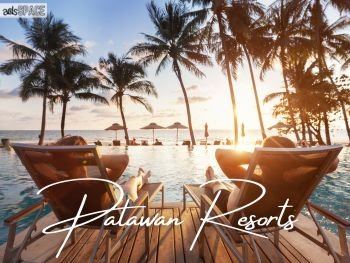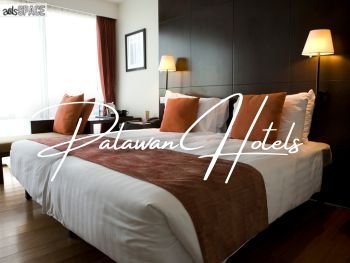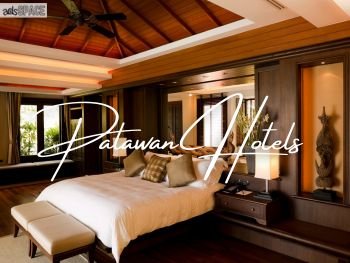Introduction
The Puerto Princesa Subterranean River National Park, commonly referred to as the Puerto Princesa Underground River (PPUR), is one of the most extraordinary natural landmarks in the Philippines. Located in Palawan, this unique river flows beneath a limestone karst mountain range before emptying directly into the West Philippine Sea (South China Sea). With its stunning cave formations, diverse ecosystem, and exceptional natural beauty, the site has earned international acclaim, cementing Puerto Princesa’s place on the global eco-tourism map.
In 1999, UNESCO designated the site as a World Heritage Site for its outstanding universal value. Later, in 2012, it was officially declared one of the New7Wonders of Nature following a worldwide voting campaign, placing it alongside global icons such as the Amazon Rainforest, Iguazu Falls, and Table Mountain.
Location and Accessibility
The Underground River is located approximately 50 kilometers north of Puerto Princesa City, within the protected boundaries of the Puerto Princesa Subterranean River National Park in Barangay Cabayugan. The park itself covers over 22,000 hectares, encompassing forests, mountains, caves, and coastal areas.
Visitors typically reach the site through a scenic 1.5-hour drive from Puerto Princesa City to Sabang, the main jump-off point. From Sabang Wharf, guests board motorized boats that take them to the park’s beach landing area, framed by lush forests and limestone cliffs. Entry is regulated, and permits are required, which must be arranged through the City Tourism Office or accredited tour operators.
Geological and Physical Features
At the heart of the park lies the 8.2-kilometer navigable underground river, one of the longest of its kind in the world. The river winds through a vast cave system filled with spectacular geological formations, including towering stalactites, massive stalagmites, cathedral-like chambers, and intricate rock patterns shaped by millions of years of water erosion.
A distinguishing feature of the Underground River is its direct connection to the sea. The lower portion of the river is subject to tidal influences, creating a unique environment where freshwater meets seawater underground. This natural phenomenon contributes to the site’s ecological richness and scientific importance.
At the cave’s entrance, a clear blue lagoon welcomes visitors. Towering limestone cliffs and ancient trees frame the area, creating a dramatic setting that is both serene and majestic.
Biodiversity and Wildlife
The park is not only geologically significant but also a biodiversity hotspot. Its protected forests are home to numerous endemic and endangered species, both terrestrial and marine. On land, visitors may encounter long-tailed macaques, monitor lizards, and Palawan hornbills. The park also shelters the Palawan peacock-pheasant and the Palawan bearcat, species found only in this region.
Inside the cave, thousands of bats roost in the chambers, alongside swiftlets that create edible nests used in traditional Chinese bird’s nest soup. The waters of the lagoon and river harbor diverse fish species, while the coastal mangroves provide nurseries for crabs, shrimps, and other marine life.
This rich ecosystem makes the Underground River a living laboratory for researchers and a natural sanctuary for wildlife.
History and Recognition
The existence of the Underground River has long been known to local communities, particularly the Tagbanua people, who regard the site as part of their ancestral domain and cultural heritage. Spanish explorers documented it in the 19th century, but scientific exploration only intensified in the late 20th century when conservation efforts highlighted its global significance.
In 1999, UNESCO inscribed the site as a World Heritage Site under the criteria of outstanding natural phenomena and significant biodiversity. In 2012, after a global voting campaign that lasted several years, the Puerto Princesa Underground River was declared one of the New7Wonders of Nature. This recognition catapulted the destination into international fame, drawing tourists, researchers, and conservationists from around the world.
Tourism and Visitor Experience
A visit to the Underground River is a highlight of any trip to Palawan. The standard tour involves boarding a small paddle boat manned by a trained local guide. Equipped with helmets and life vests, visitors are taken on a 45-minute journey into the cave, covering approximately 1.5 kilometers of the river’s length.
Guides use spotlights to illuminate the cave’s formations, pointing out natural sculptures that resemble animals, religious figures, or mythical creatures. The atmosphere inside is both awe-inspiring and humbling, as the vast chambers echo with the sounds of bats and dripping water.
Beyond the cave tour, the park offers additional activities. Nature trails allow visitors to explore the surrounding forests, where they can encounter monkeys, exotic birds, and rich flora. Sabang Beach provides opportunities for swimming, while nearby mangrove paddle tours offer a quieter, more intimate encounter with Palawan’s ecosystems.
Conservation and Environmental Significance
The Puerto Princesa Underground River is more than a tourist attraction—it is a protected national park that underscores the importance of balancing conservation with tourism. The Puerto Princesa City Government, in cooperation with the Department of Environment and Natural Resources (DENR), regulates access to the site to prevent overcrowding and minimize environmental impact.
Strict permit systems, limited daily visitor quotas, and the use of non-motorized paddle boats inside the cave are among the measures implemented. Revenue from tourism is reinvested into conservation programs, ranger patrols, and community development projects that benefit local residents, particularly in Sabang.
Globally, the site is recognized as a model for sustainable eco-tourism, where economic opportunities for locals are balanced with the long-term protection of natural and cultural heritage.
Travel Tips for Visitors
- Permits: Secure your entry permit in advance through accredited tour operators, as daily visitor numbers are limited.
- Best Time to Visit: The dry season (November to May) offers calmer seas for boat transfers. However, tours may still operate in the rainy season depending on weather conditions.
- What to Bring: Wear comfortable clothing, water-friendly footwear, and bring insect repellent. Cameras are allowed but must be handled carefully inside the cave.
- Respect Wildlife: Avoid feeding monkeys or disturbing animals around the park, as this disrupts their natural behavior.
- Combine Tours: Many packages include side trips to Sabang Beach, mangrove paddle tours, or ziplining activities nearby.
Puerto Princesa Underground River
The Puerto Princesa Underground River stands as a symbol of Palawan’s natural wealth and the Philippines’ global ecological heritage. With its majestic cave systems, thriving biodiversity, and recognition as one of the New7Wonders of Nature, it offers a once-in-a-lifetime experience for travelers while reminding the world of the importance of preserving natural wonders for future generations.
For Puerto Princesa, the Underground River is more than just a tourist attraction—it is a point of pride, a source of livelihood, and a powerful reminder of humanity’s responsibility to live in harmony with nature. Visiting this site is not only an adventure into the depths of the earth but also a journey into the heart of Palawan’s identity as the Philippines’ “Last Ecological Frontier.”




